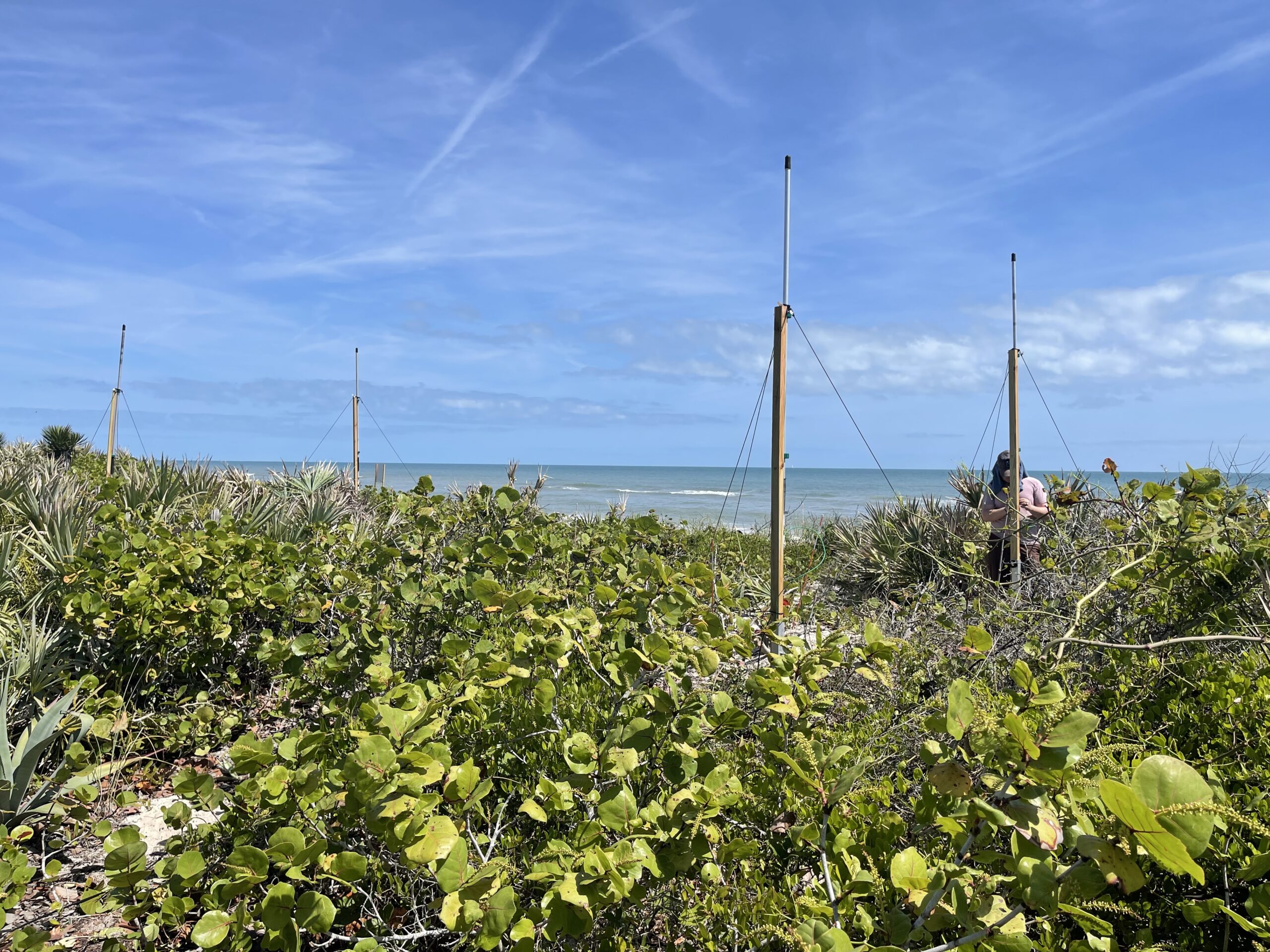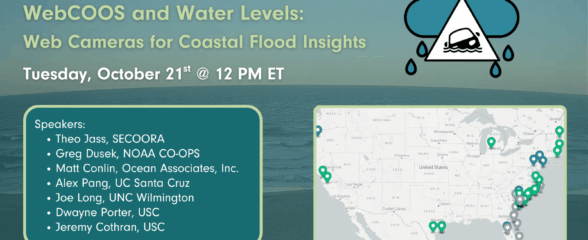
The NOAA U.S. Integrated Ocean Observing System (IOOS) Office, NASA, the Southeast Coastal Ocean Observing Regional Association (SECOORA), and partners at the University of Georgia’s Skidaway Institute of Oceanography worked together to install an oceanographic high-frequency radar (HFR) at the Kennedy Space Center in Cape Canaveral, Florida.
This location on the Space Coast, central to Florida’s east coast, fills an important gap in the IOOS HFR National Network, which supports offshore search and rescue efforts, ocean forecast modeling, and the tracking of oil spills, marine debris and harmful algal blooms. NASA and SECOORA partners are also interested in the use of the data to measure conditions impacting coastal erosion and to better understand offshore currents and sea state for spacecraft splashdowns.
Kennedy Space Center is an ideal location for a HFR deployment, made possible by its undeveloped beachfront and proximity to the Gulf Stream—the strong, warm northward current that hugs the U.S. East Coast—which begins to shift slightly offshore along the Space Coast as the continental shelf widens.
HFRs are land-based systems that use radio waves to measure the speed and direction of ocean surface currents as well as wave height, period, and direction in near real-time. Kennedy Space Center was selected for the location of the new radar station to fill a large gap in surface current coverage. The Kennedy Space Center HFR works in tandem with another SECOORA HFR deployed at the Canaveral National Seashore. In the area where the radio waves from the two HFR stations overlap, the system can make maps of surface current speed and direction.
“This partnership between NOAA, NASA, and SECOORA is key to delivering the best marine environmental intelligence available for the State of Florida. The HF-radar sensor at the Kennedy Space Center provides oceanographic data necessary for making evidence-based decisions and forecasts that help preserve lives and property along this uniquely dynamic region of the Space Coast.”
— Brian Zelenke, NOAA U.S. IOOS Surface Currents Program Manager
Access the Data
The NOAA National Data Buoy Center HF-Radar National Server provides surface current information from radars across the country. To learn more about SECOORA HFRs and how the data are used, explore the High-Frequency Radar page.
Related news

SECOORA Webinar | WebCOOS and Water Levels: Web Cameras for Coastal Flood Insights
On October 21st at 12 PM ET, SECOORA is hosting a webinar with investigators from the Webcam Coastal Observation System (WebCOOS) project team and the WebCOOS Project Manager. Web cameras are a low-cost technology that can be used to document flooding impacts to coastal communities. Register here.

SECOORA Funding Opportunity Announcement: Letters of Intent Solicitation
SECOORA will submit a coordinated regional proposal in response to the anticipated FY 2026 Implementation of the U.S. Integrated Ocean Observing System (IOOS) funding opportunity. Letters of Intent to be considered for inclusion in SECOORA’s full proposal are due September 9, 2025.

SECOORA Hosts the First Surface Elevation Table (SET) Community of Practice Virtual Workshop
The SECOORA SET Workshop was virtual on July 17, 2025. More than 50 Community of Practice members and stakeholders joined this collaborative workshop to discuss SET monitoring, coastal resilience, and data-driven decision making in the Southeast.